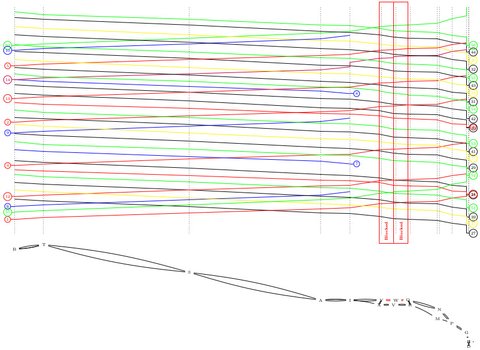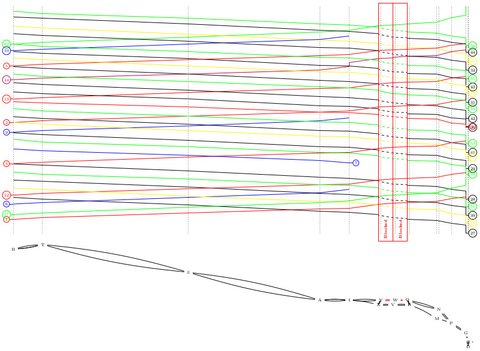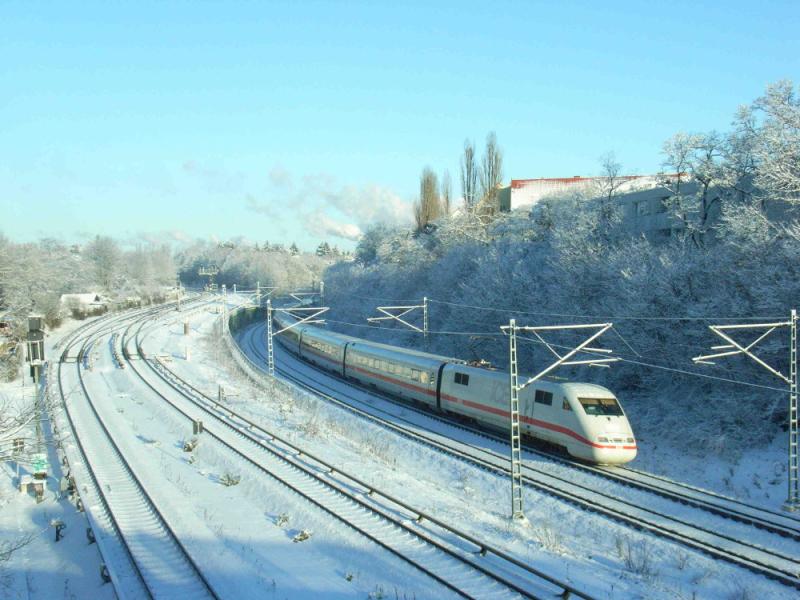Topic of the Train Dispatching Project is to evaluate mathematical optimization models and tools for solving the Train Dispatching Problem with focus on freight trains.
Especially, in the case when unpredictable disruptions happen.
The Train Dispatching Problem is the task to find a time table after some disruptions have happen, e.g., calculating new arrival and departure times for each train of
a given train set and every station and track on the trains route through a given railway network. This should be done with minimal cost and minimal deviance from a
given reference timetable, while adhering operational restrictions resulting from the disruption.
Therefore, main topic of the Train Dispatching Project is to develop a concept to tackle the problem task and to evaluate the models and tools in sense of usability and
feasibility even for large system wide disruptions in microscopic networks.
The German railway network has an aggregated track length of roughly 40,000 km where at least 180 million tons of good are transported every single year. Since the amount transported goods is increasing there are many initiatives in the European Union to increase the share of railway transportation as well to decrease CO² emissions. According to market rules one way to increase the railway traffic is to make railway transportation more attractive. Hence, it is likely to use the existing railway network resources as good as possible and to reduce delay resulting from disturbances in the network, which have an influence on the resulting costs of the transported goods. Especially, delays can interfere each other and grow over time which can lead to cancellation of complete trains.
In this project mathematical tools should be developed to find a time table after some disruptions have happen, e.g., calculating new arrival and departure times for each train of a given train set and every station and track on the trains route through a given railway network. This should be done with minimal cost and minimal deviance from a given reference timetable, while adhering operational restrictions given resulting from the disruption. The computation time of these tools is from special importance such that the results could be executed until the new timetable becomes obsolete. Whether this is possible or not even in microscopic railway networks with strict bounds for the runtime of the tools is one major topics of this project.
Ansatz

Figure 1 shows a time way diagram of a reference situation respectively a reference timetable for a given network. The upcoming disruption is marked with the red boxes.
To tackle the problem a two-level approach was chosen. Once a disruption happens a set of alternative routes is computed for all affected trains which is the first step of the algorithm. In the second level of our approach a route for each affected train is chosen and optimal arrival and departure times along this route are calculated. This is done by an Mixed Integer Program based on an disjunctive graph representation that represents every operational constraints of the problem tasks, e.g., driving times, headway times and delays for temporary disruptions.

Figure 2 shows a time way diagram of the new timetable.
